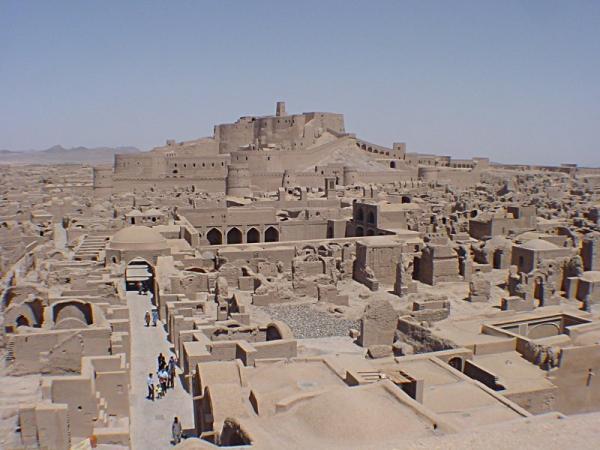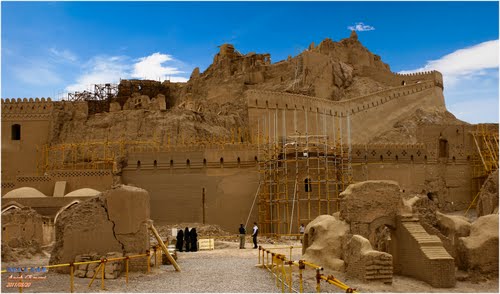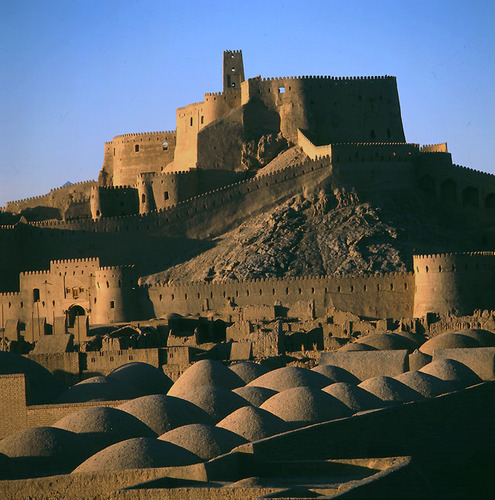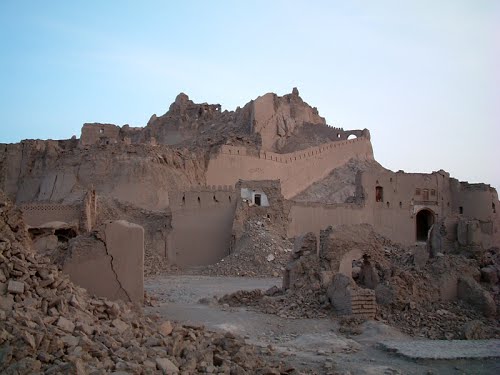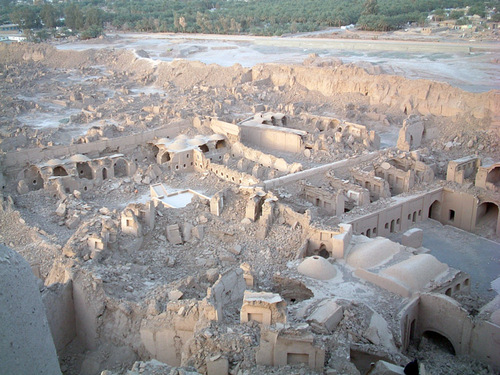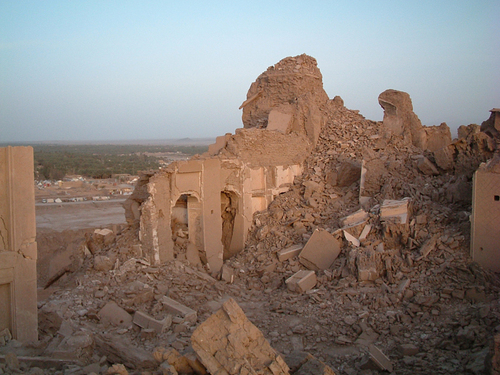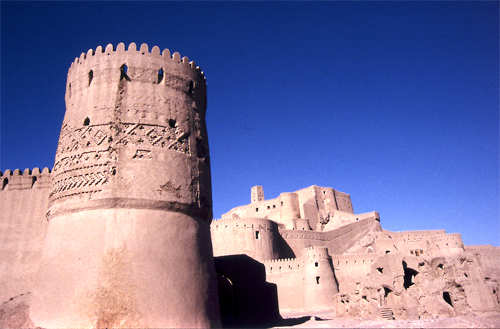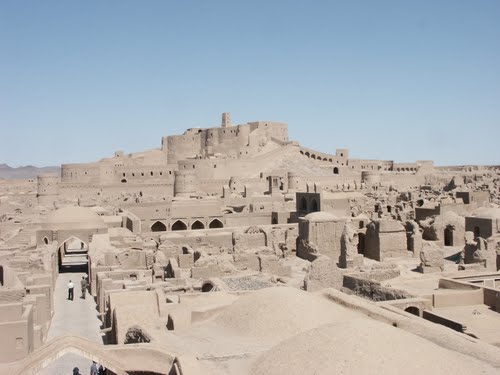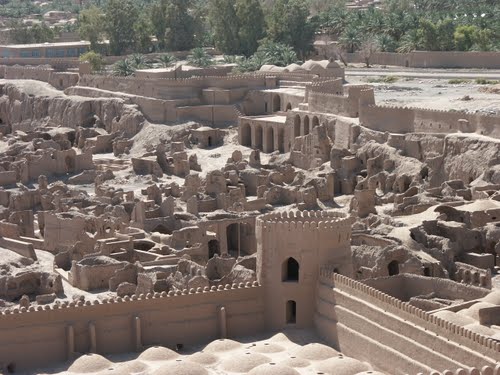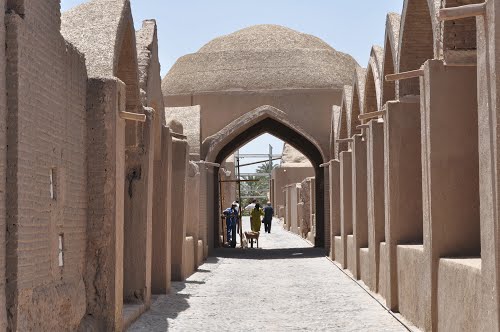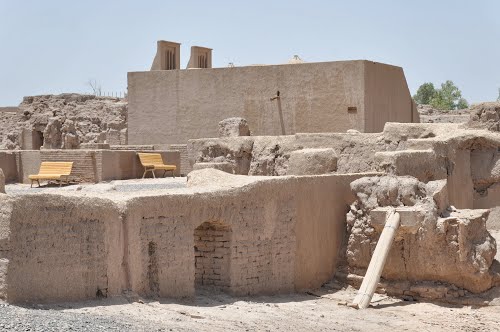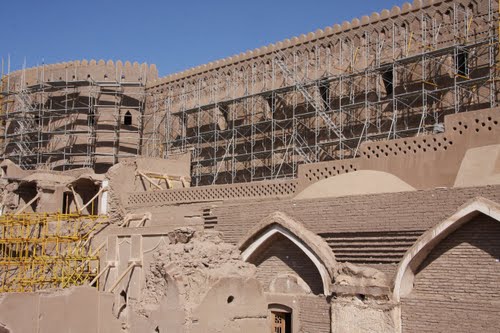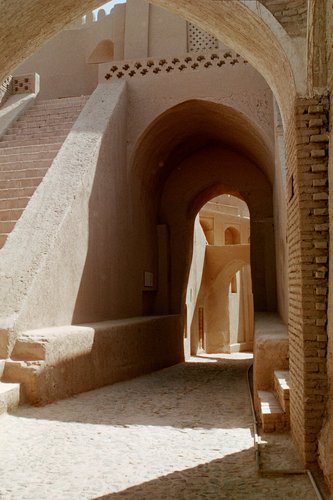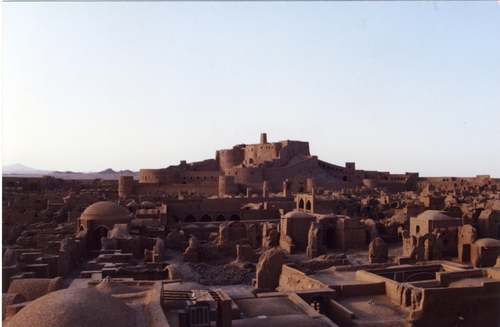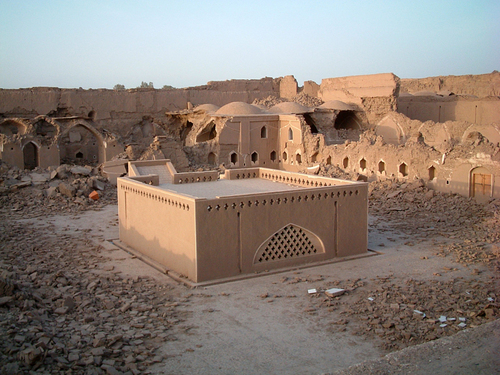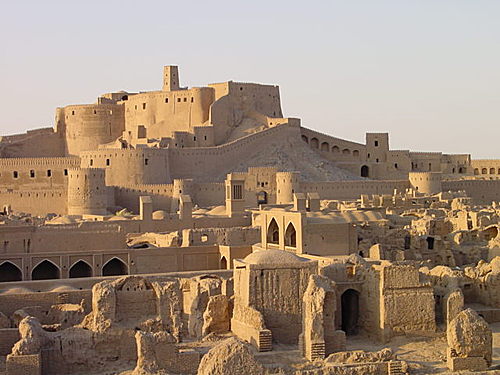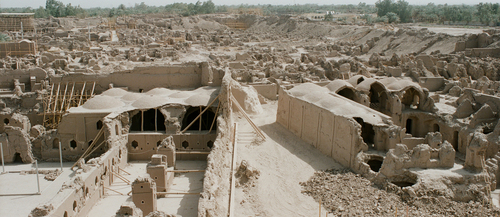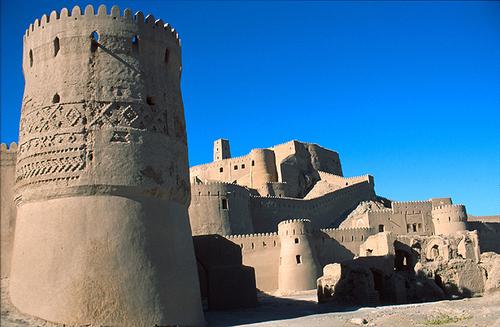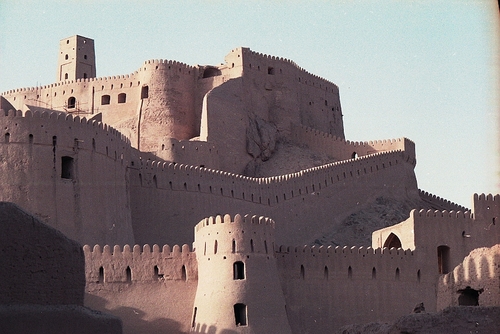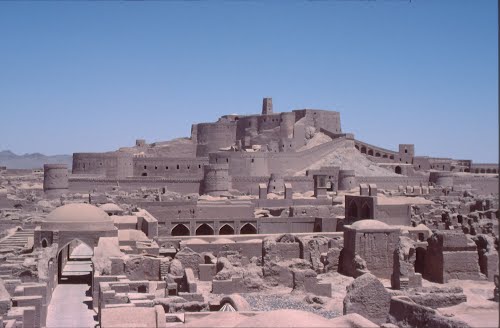The Arg-e Bam was the largest adobe building in the world, located in Bam, a city in Kerman Province of southeastern Iran. It is listed by UNESCO as part of the World Heritage Site "Bam and its Cultural Landscape". The origin of this enormous citadel on the Silk Road can be traced back to the Achaemenid Empire (sixth to fourth centuries BC) and even beyond. The heyday of the citadel was from the seventh to eleventh centuries, being at the crossroads of important trade routes and known for the production of silk and cotton garments.
The entire building was a large fortress in whose heart the citadel itself was located, but because of the impressive look of the citadel, which forms the highest point, the entire fortress is named the Bam Citadel.
On December 26, 2003, the Citadel was almost completely destroyed by an earthquake, along with much of the rest of Bam and its environs. A few days after the earthquake, the President of Iran, Mohammad Khatami, announced that the Citadel would be rebuilt.
Dimensions
Larger than nearby Rayen Castle, the area of Bam Citadel is approximately 180,000 m², and it is surrounded by gigantic walls 6–7 metres high and 1,815 metres long. The citadel features two of the "stay-awake towers" for which Bam is famed - there are as many as 67 such towers scattered across the ancient city of Bam.
Citadel design and architecture
The planning and architecture of the citadel are thought out from different points of view. From the present form of the citadel one can see that the planner had foreseen the entire final form of the building and city from the first steps in the planning process. During each phase of building development the already-built part enjoyed a complete figure, and each additional part could be "sewn" into the existing section seamlessly.
The citadel is situated in the center of the fortress-city, on the point with widest view for security.
In the architectural form of Bam Citadel there are two different distinguishable parts:
The rulers' part in the most internal wall, holding the citadel, barracks, mill, 4-season house, water-well (dug in the rocky earth and about 40 metres deep), and a stable for 200 horses.
The ruled-over part surrounding the rulers' place, consisting of the main entrance of the entire fortress-city and the bazaar alongside of the North-to-South spinal axis (which connects the main entrance to the citadel), and around 400 houses with their associated public buildings.
Among the houses, three different types are recognizable:
- ● Smaller houses with 2-3 rooms for the poor families.
- ● Bigger houses with 3-4 rooms for the middle social class, some of which have also a veranda.
- ● The most luxurious houses with more rooms oriented in different directions suitable for different seasons of the year, together with a big court and a stable for animals nearby. There are few of this type of houses in the fortress.
- ● All buildings are made of non-baked clay bricks, i.e. adobes. Bam Citadel was probably, prior to the 2003 earthquake, the biggest adobe structure in the world.
- ● The Citadel was used as the major location site for Valerio Zurlini's film, The Desert of the Tartars.

